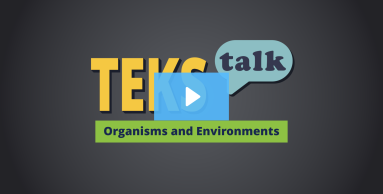
Knowledge and Skills Statement
Provide each student with a different animal picture. Have students mix-pair-share. Each time students pair with someone, the teacher should choose a different structure for students to discuss. Students should identify the specified structure and explain how it helps the animal meet its needs. For example, students might discuss the ears on the organisms that they are comparing. If one student has an elephant and another student has a polar bear, they can compare the size and covering of the ears. Elephants have big ears because it helps them cool down. Polar bears have small ears covered in fur so that they don't lose as much heat. Two students could compare the wings of a bird to the arms of a chimpanzee. The bird uses its wings to fly through the air while a chimpanzee uses its arms to hold food and to swing from branch to branch.
Research
Sinoradzki, Kristen, and T. J. McKenna. “What’s so Phenomenal About Animals? Using Structure and Function to Explore Animal Diversity.” Science and Children 58, no. 6 (2021): 86–90. www.nsta.org/science-and-children/science-and-children-julyaugust-2021-0/whats-so-phenomenal-about-animals.
Summary: This article explains that allowing students to explore animal diversity and the different structures that allow them to survive can help increase student engagement. Discussions about this topic can help promote a broader vocabulary.
